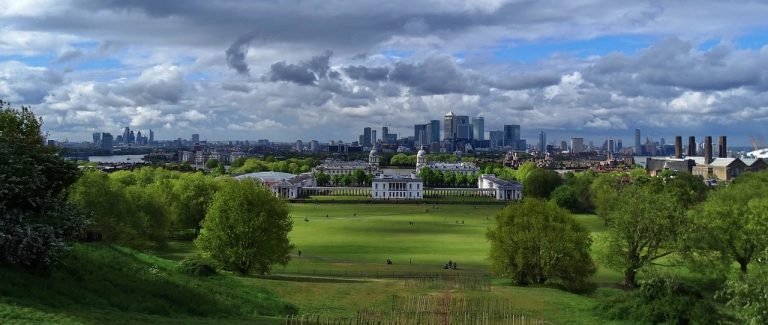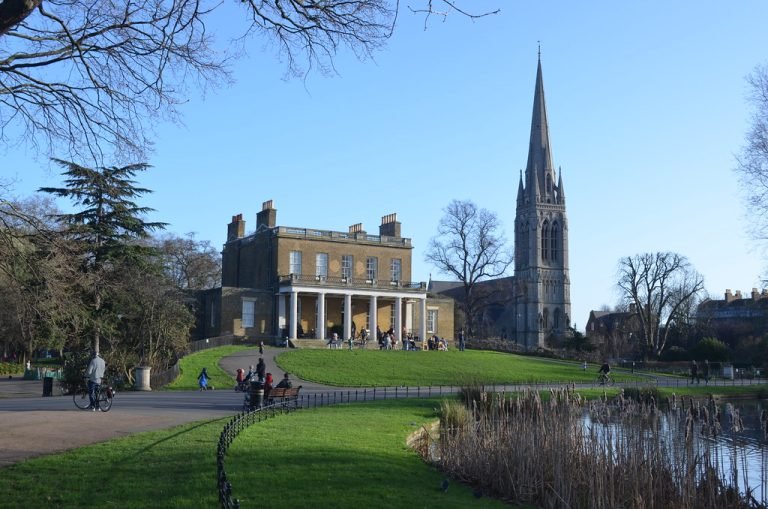Where Every Canvas Speaks
Step into the heart of London’s art scene, where colours breathe, brushstrokes echo, and history whispers from every wall. The National Gallery is not just a museum; it’s a gateway to centuries of human expression, an oasis of quiet reflection in the midst of the bustling Trafalgar Square. This journey promises more than admiration—it’s an exploration into the minds of the world’s greatest artists, revealing secrets and emotions frozen in time.
As you approach, the building itself seems to draw you in, bathed in light, with grand columns and vast halls that hint at treasures within. You can almost hear the silent conversations between Van Gogh‘s vibrant yellows, Leonardo da Vinci‘s precise lines, and Turner’s atmospheric skies. Imagine the feeling of stepping into an expansive room filled with some of the world’s most powerful artwork—paintings that have transcended centuries, nations, and cultures, waiting for you to unlock their mysteries.
Beyond the Ordinary
What makes the National Gallery so unique is its ability to draw visitors into stories beyond the surface—each canvas a portal to another world, another era. Picture this: you’re standing before Monet’s Water-Lilies, surrounded by a calm pond of colour, when suddenly, you feel the tranquility and soft breeze of Giverny. Or take Rembrandt’s Self-Portrait at the Age of 63—one glance and you sense the weight of a life lived, the wisdom and melancholy etched into every shadow.
Setting the Scene
Inside the National Gallery, everything from the subdued lighting to the echo of footsteps creates a palpable atmosphere, perfect for art’s quiet revelations. The air is tinged with the faint scent of aged paint and the faint murmur of visitors—a mix of art students, curious travellers, and seasoned gallery-goers pausing to absorb each piece. Standing here feels almost sacred, as though you’re being entrusted with tales and secrets known only to those who look closely enough.
The Journey of Discovery
Walk through the gallery’s halls, and every turn reveals a new era. Renaissance art greets you with brilliant Italian frescoes and lush depictions of biblical scenes; then, as you move forward, you meet the drama and grandeur of Baroque, full of energy and motion. Yet further along, the Impressionists capture moments that are fleeting and poetic, their colours and textures vibrant and untamed.
As you stroll from room to room, history unfolds with each brushstroke. The building itself seems to breathe with the stories of the past, the art acting as time capsules that reveal cultural shifts, human experiences, and timeless emotions. Here, art is more than a display; it’s a narrative woven into the very fabric of humanity.
What to Expect on Your Visit
Where is the National Gallery located? Right in Trafalgar Square, central London, the gallery is easily accessible by the London Underground, with Charing Cross as the closest station.
When should you visit? Open daily from 10:00 AM to 6:00 PM, the gallery also offers Friday night openings until 9:00 PM, a quieter and atmospheric time to enjoy the art. The gallery is busiest on weekends and afternoons, so consider an early morning or weekday visit for a more serene experience.
Why visit the National Gallery? It’s one of the world’s greatest art collections, housing over 2,300 works dating from the 13th to the 20th century. The collection is free to enter, ensuring art remains accessible to all, a philosophy that dates back to its founding in 1824.
The Secrets of the Art
Beyond the famous works, the gallery holds hidden gems and secrets steeped in history. For instance, did you know that Leonardo da Vinci’s “Virgin of the Rocks” holds mysterious layers and possibly hidden figures beneath its surface, revealed through X-rays?
And what about the fascinating quirks of Holbein’s “The Ambassadors”? Look closely at the distorted skull in the foreground—it’s an example of anamorphosis, a hidden image that reveals itself when viewed from a certain angle, a playful trick by Holbein himself. Little-known facts like these make each visit to the gallery feel like an uncovering of ancient puzzles and mysteries.
For those seeking deeper knowledge, the gallery often holds lectures and workshops led by art historians and resident experts, offering fresh perspectives and insights into the stories behind the masterpieces.
Meaning and Reflection
Visiting the National Gallery isn’t just about admiring beautiful paintings; it’s a journey through the soul of human creativity. Each piece invites you to pause, reflect, and connect with the thoughts and emotions of those who came before. How does Caravaggio’s dark realism make you feel? Does Van Gogh’s “Sunflowers” evoke a sense of joy or something deeper, perhaps a glimpse into the artist’s mind?
This isn’t merely a tourist attraction; it’s a place for introspection and personal growth. Art has the power to mirror our lives, our sorrows, and our triumphs, offering visitors a chance to experience a moment of quiet contemplation in a chaotic world.
Sustainability and Cultural Respect
As one of London’s cultural treasures, the National Gallery remains committed to preserving its collection for generations to come. Every visitor plays a part in this by respecting the space and following guidelines. From carbon reduction initiatives to sustainable sourcing for exhibitions, the gallery is setting an example in cultural responsibility and environmental consciousness.
Vivid Descriptions and Multi-Sensory Appeal
Visualise the bold hues of Van Gogh’s “Sunflowers”, the thick texture of paint almost spilling from the canvas, as if the artist’s passion itself took physical form. Feel the quiet majesty of “The Fighting Temeraire” by Turner, where the last light of day seems to fall over the departing ship in golden hues, a farewell both poignant and triumphant.
Listen to the whispers of the past in hushed tones of conversation around you, soft footsteps echoing off polished floors. Imagine the scents of aged varnish and timeworn canvas, each adding to the aura of a place where stories wait patiently to be discovered.
Conclusion: A Canvas for Your Own Story
After all the wonder, the history, the hidden stories, what does the National Gallery mean to you? Perhaps it’s a place of beauty, a sanctuary, a gateway to inspiration. Or perhaps it stirs a desire to delve deeper into art, culture, and our shared human story.
If you’ve ever found yourself moved by a piece of art, you’ll know the feeling—a gentle tug at the soul, a reminder of life’s fleeting moments captured and immortalised. The National Gallery isn’t just a place to visit; it’s a journey through time, colour, and emotion. So, when will you make this pilgrimage?
Whether you’re an art enthusiast or a curious traveller, the National Gallery promises something rare: an invitation to step out of the everyday and into the extraordinary. Share your thoughts, dreams, or favourite pieces in the comments below, and begin planning your own journey to discover the art, stories, and secrets waiting in London’s iconic gallery.









